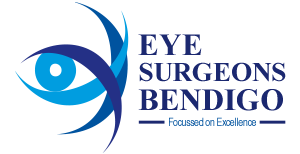 The fourth part of a series looking at eye diseases that affect vision.
The fourth part of a series looking at eye diseases that affect vision.
Writer: Dr Farok Irani (MBBS, Dip Anat, FRANZCO) - eye specialist at Eye Surgeons Bendigo
Diabetes is a leading cause of blindness in people aged 20 to 65. Screening and early management of eye complications are essential to prevent permanent visual loss.
What is diabetes?
Diabetes is a disorder of glucose metabolism resulting in chronically elevated blood sugar levels. Its prevalence is vastly increasing.Most people that have it have no symptoms. It affects many organs and especially the eye (kidneys, brain, heart, peripheral nerves, large and small blood vessels.) There are two types: Type one where there is a deficiency in insulin and Type two where there is a resistance to insulin. Insulin can be used to treat both types. There is community misconception that type two is not as serious as type one. This is incorrect.
Pregnancy may induce diabetes. Conversely, diabetics who fall pregnant can have escalation in diabetic eye disease.
How does it affect the eye?
The chronically elevated blood glucose damages the blood vessels that supply the retina. These small blood vessels can occlude and hence can’t supply the retina with oxygen. Moreover, they can leak fluid, fat and blood into the macula (central portion of the retina), which degrades vision. In severe cases, new very fragile blood vessels grow, and these then bleed and this can lead on to retinal detachment and complete blindness. Diabetes also accelerates the formation of cataracts and is a risk factor for glaucoma-both of which can cause visual impairment. Regular eye examinations will determine the presence or absence of retinopathy (damage to the retina) from diabetes. This is important. Not only can early intervention prevent further deterioration, but it is also a harbinger for what is happening to other organs, e.g. the kidneys (the eye is the window into the body.)
How are eye problems diagnosed?
Upon consulting an eye specialist, the following is performed: Direct inspection of the retina after dilation of the pupil. The disease is graded and often photographs are taken. Special tests to determine the presence of subtle macula fluid and objectify the thickness of the macula (via ocular coherence tomography – akin to an ultrasound). Fluorescein Angiography – orange dye is introduced into a small vein in the back of the hand and finds its way into the retinal circulation. It can determine the presence of leaky blood vessels or areas of the retina with no oxygen (ischaemia).
How is it treated?
Depending on the severity, the eye disease may be watched or treated. Initial steps to tighten blood sugar levels, blood pressure, blood lipids, weight loss, cessation of smoking and exercise are encouraged. Visits to the eye doctor at regular intervals are scheduled. If the disease has advanced then treatment options include:
- Laser – to treat fluid at the macula or toprevent new blood vessels growing.
- Injections into the eye of drugs: (steroids, anti vascular endothelial growth factors) that arrests new blood vessels that are growing and mops up excess fluid in the macula. Surgery – needed in advanced cases to remove blood from the eye or to treat the retina that is being pulled off from the back of the eye.
- Regular eye screening and prompt medical intervention will save many people from losing vision or going blind.
If you want to know more please CONTACT US

